Surviving winter break on duty with cup noodles and supplements… The contents of the menu that the SDF “let him eat more” sympathized with him.
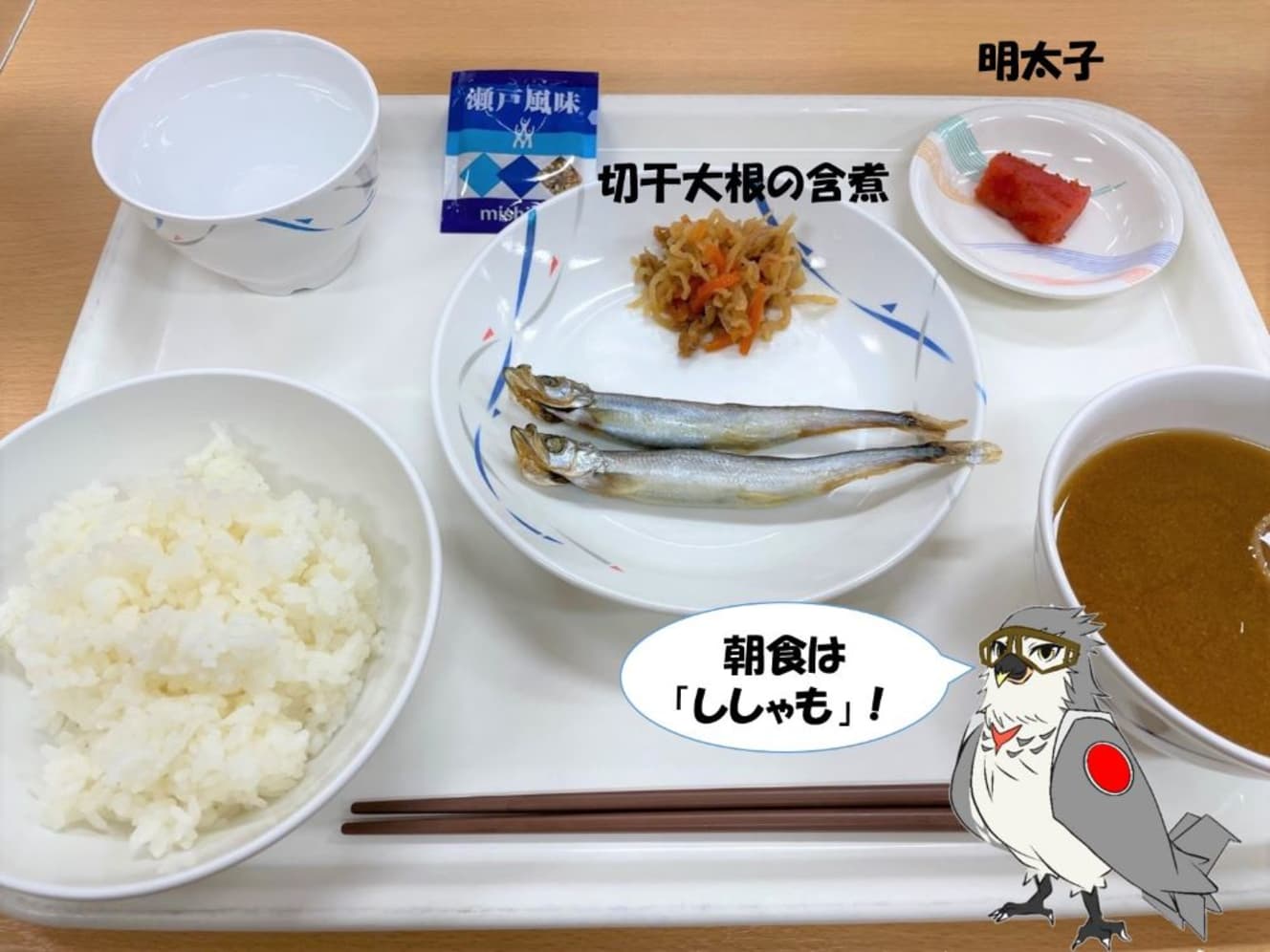
Last year saw a series of shocking incidents in the Self-Defense Forces. In June 2011, a Self-Defense Force cadet opened fire during live-fire training, killing and wounding three people. In December of last year, an active duty SDF officer on leave killed an 82-year-old man living in Kyoto City.
In addition to the murder, on July 6, 2011, it was reported that a senior SDF officer was suspended from his post for 30 days after eating and drinking a total of seven meals at the Air Self-Defense Force Gifu Air Base cafeteria without paying. This SDF officer said that he did it because he ran out of money to live on. Senior SDF officers and “off-duty personnel” who live in government housing or general rental housing outside the SDF bases are not allowed to eat in the cafeteria. However, if they apply in advance and receive permission, they can pay a fee to eat, but failure to follow this procedure or taking more bread, natto, etc. than the amount of food allotted for one meal can lead to disciplinary action in some cases.
On April 26, 2010, a 1st Lt. in his 50s at Iruma Air Base of the Air Self-Defense Force was suspended for three days for illegally accepting two pieces of bread with side dishes in the mess hall. The reason for the disciplinary action was that the lieutenant paid 234 yen per meal and had to choose between a bread set and a rice set, but took both. Even if he paid the fee, he would be suspended if he took two pieces of bread. This suspension meant that any further promotions were doomed. I believe that something must be done about the environment in which members are disciplined or retire for this kind of thing.
The average JSDF member’s diet consists of three meals a day for 947 yen.
So, what is the food situation for SDF personnel these days? The general public has an image of the Self-Defense Forces as having a good welfare system and food, clothing, and shelter being guaranteed by the government. In reality, however, the members themselves bear much of the burden of living and performing their duties, and the profession is far removed from the image of a well-funded welfare system.
In many countries, the idea is to train their own soldiers and make them stronger both physically and mentally in order to protect the country from enemies and terrorists. Therefore, the “food” served to soldiers is considered important for the purpose of building a strong body. The Japanese government and many people tend to think that the “diet” of the SDF personnel is not for building a strong body, but rather for nutritional support.
To give a simple example, when the issue of the SDF’s meals is raised on social networking sites, people tend to say, “The company cafeterias in general companies are like that too. This should be enough.” “Don’t make the SDF so extravagant,” are some of the comments that are made. In Japan, it is difficult to be understood even when explaining the difference in purpose and meaning between the meals of SDF personnel, who train day and night to protect the country, and those of the general public.
Except for those in positions with additional meal expenses, such as those on remote islands, naval ship duty, pilots, and other special positions, the meals of ordinary SDF personnel usually cost 947 yen for three meals a day.
The first time I became aware of the issue of the SDF’s meals was on November 16, 2009, in a post to X at the Yokota Air Base of the Air Self-Defense Force. The post read, “Introducing #YokotaMeshi, a nutritionally balanced functional meal at JASDF Yokota Air Base.”
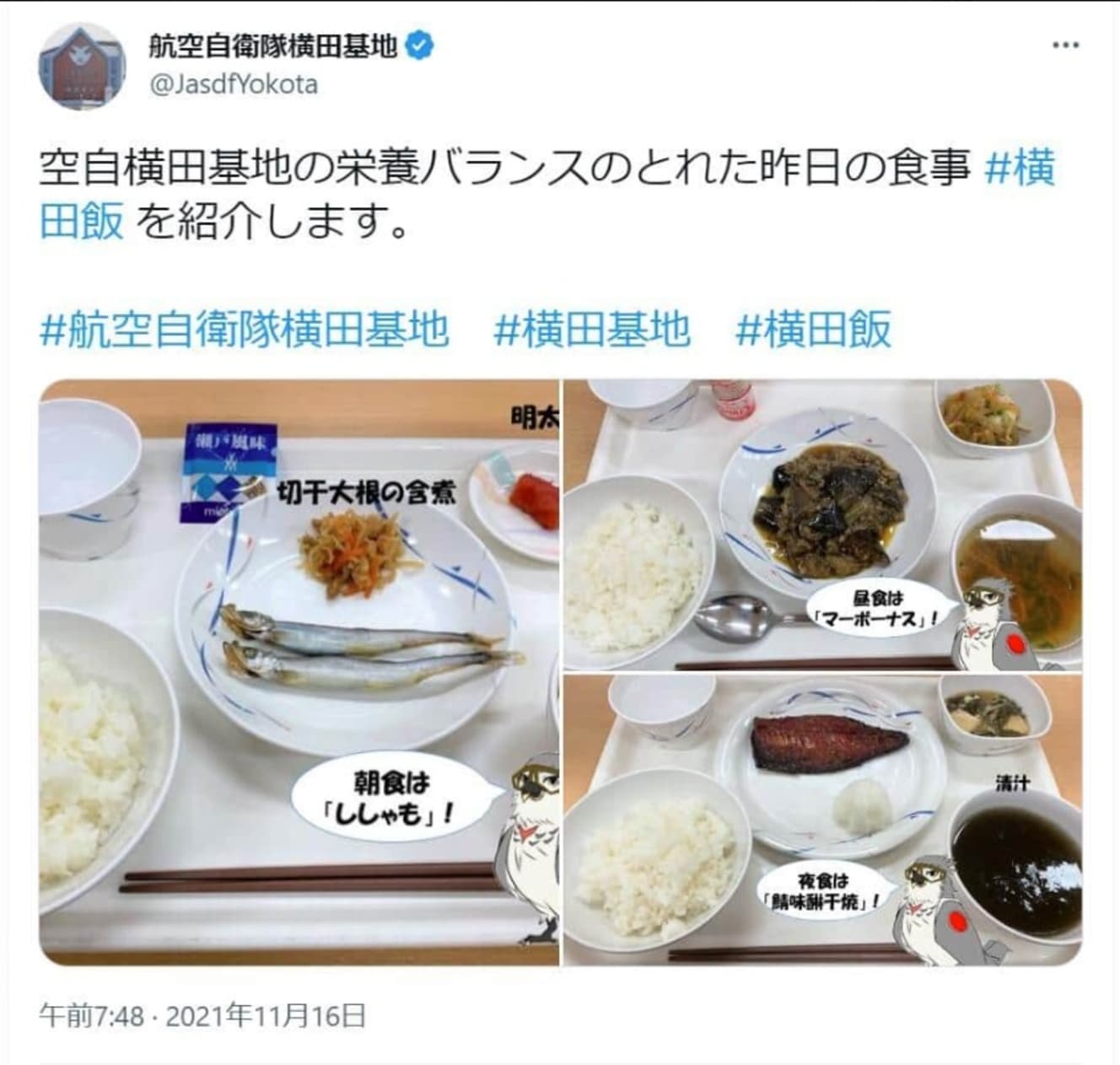
The meals served at the base are not uniform, but ……
<The breakfast, described as a “nutritionally balanced meal,” consisted of two shishamo fish and a small amount of cod roe. Lunch was also marbo-eggplant and vegetables, and the evening meal was grilled mackerel with mirin-kirinboshi (mirin-style sweet sake) and clear soup. <Is this hospital food for the elderly? ><The comments were abundant: “Let them eat more food!
After this post was repeatedly flamed, Yokota Air Base became very careful to post only special menus. However, later on May 31, ’23, a post on burdock udon also received the comment, <Too little animal protein>.
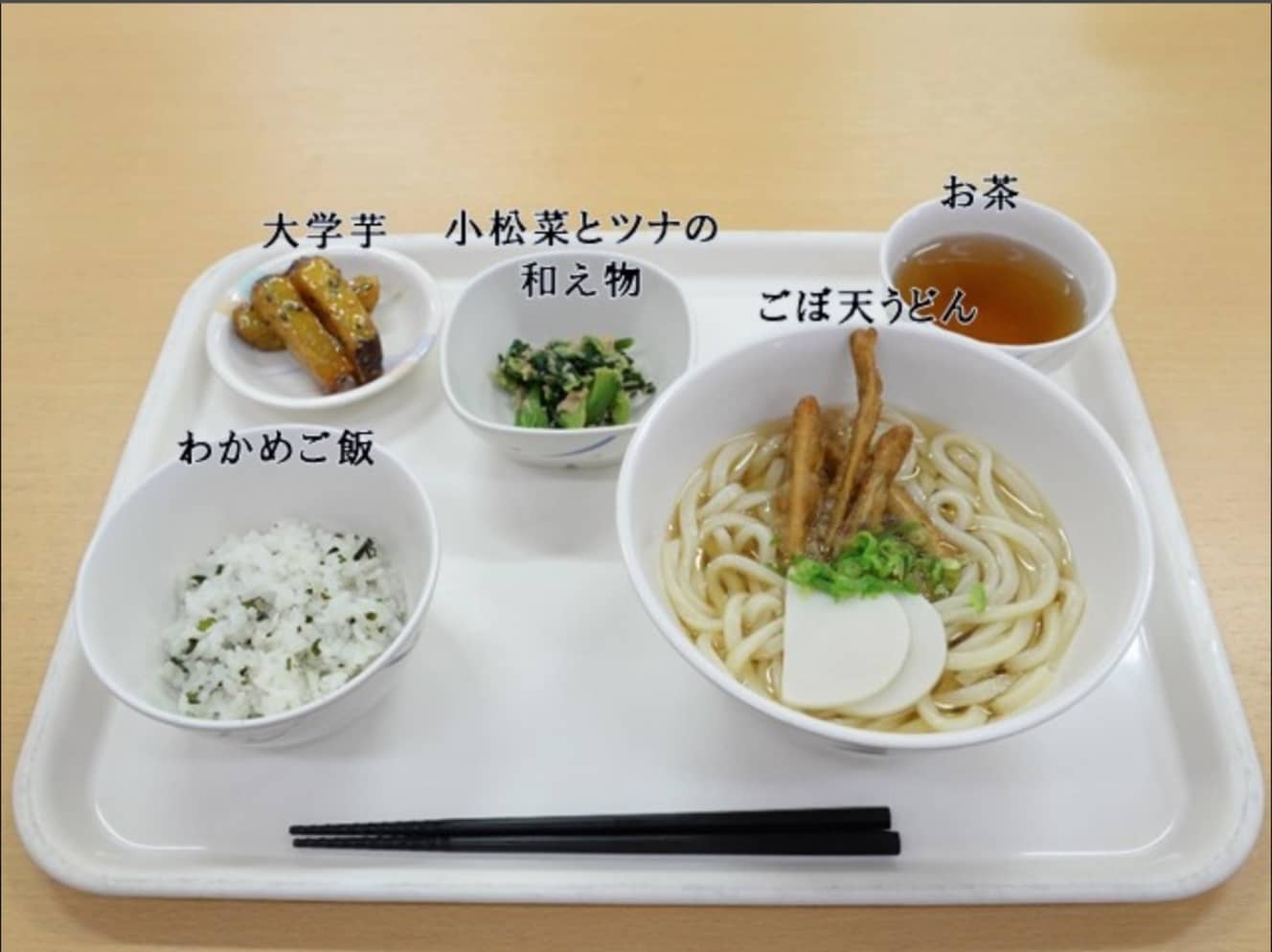
The meals served at bases are not uniform, and vary greatly between bases that have adequate rations and those that do not. For example, at Miyakojima Garrison, for example, the remote island rule dictates that one more side dish is provided than at a regular base. The daily meal cost, including transportation costs, adds up to 1,400 yen. Food is better on the islands than at other bases. If you compare Miyako Soba at Miyakojima Garrison with Udon Noodles with Burdock Tempura at Yokota Air Base, you will see the difference. Similarly, the cost of food for pilots and those working on Maritime Self-Defense Force vessels also adds up, although not to the same extent as on remote islands. There is a big difference in the meals provided by the Self-Defense Forces depending on the job category.
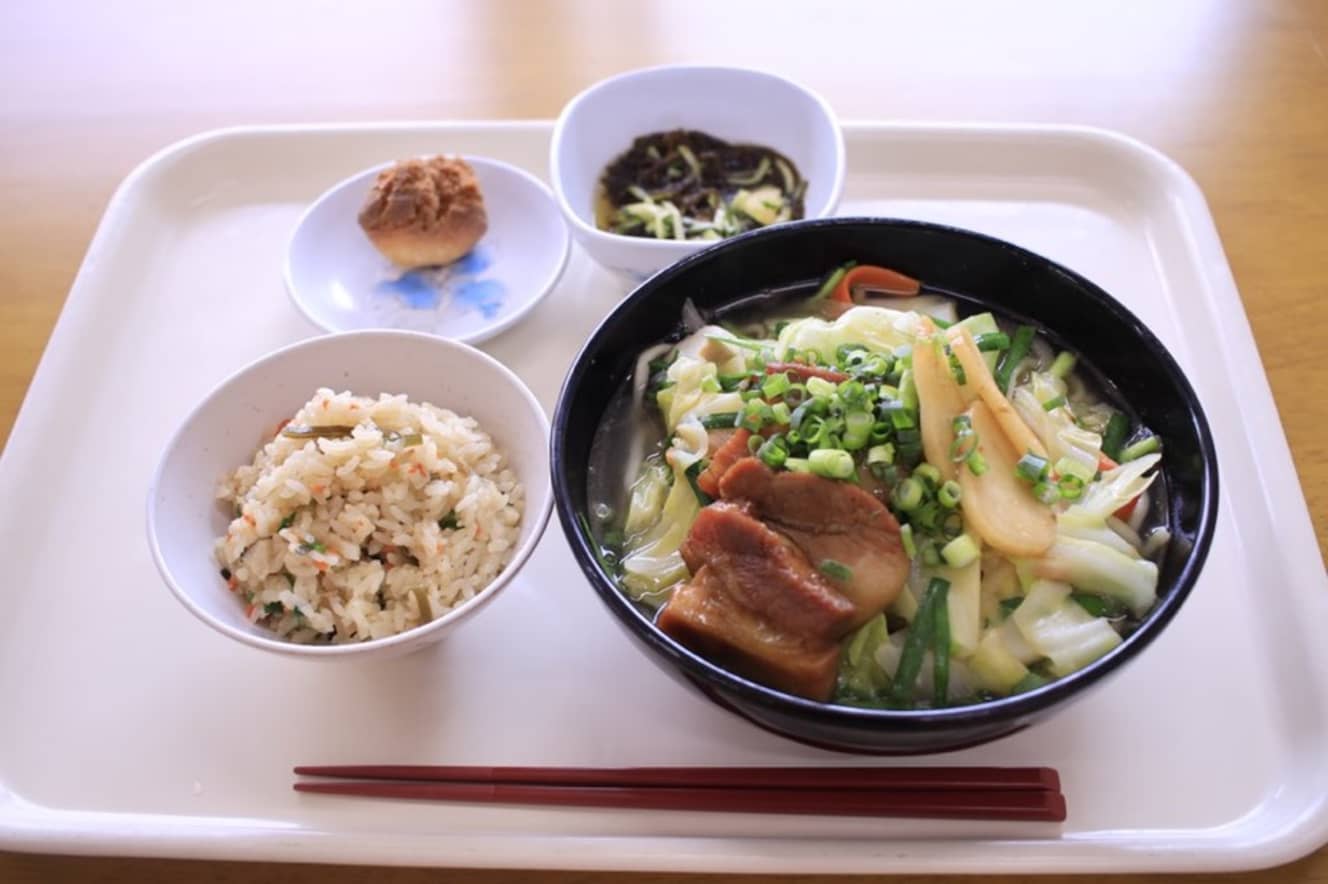
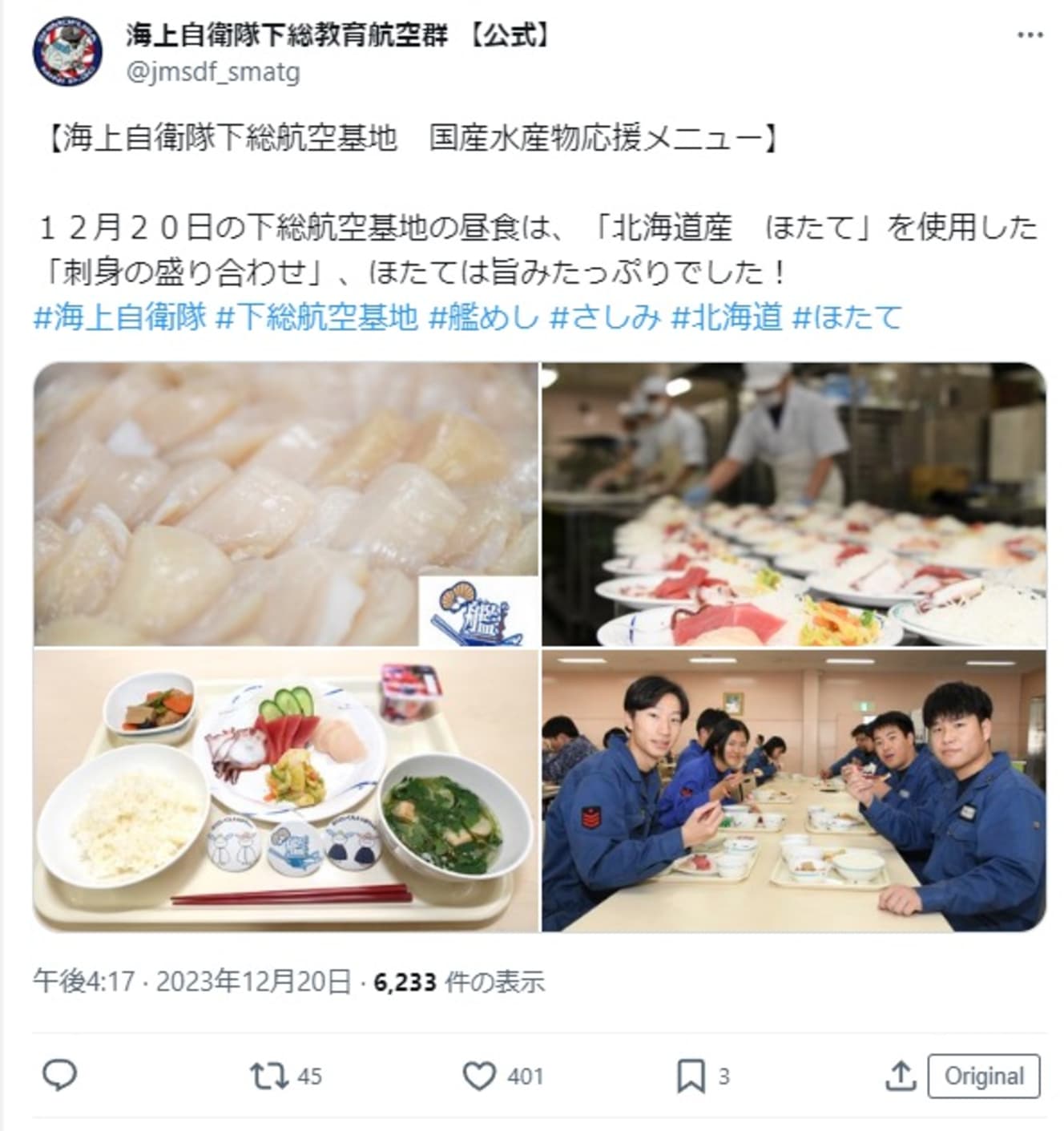

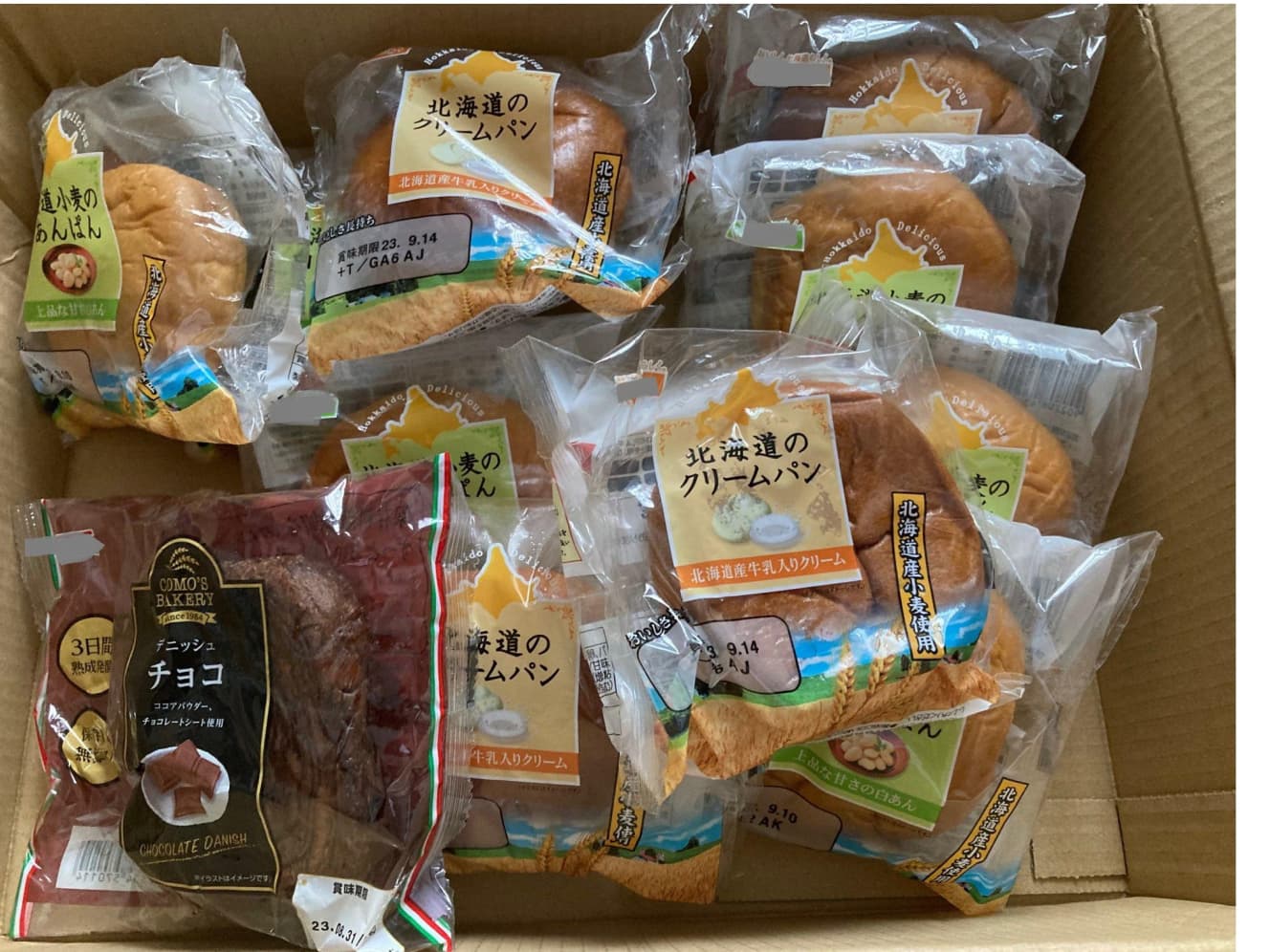
The National Defense Academy, where future SDF officers and research personnel are enrolled, is currently on winter vacation, and we were able to obtain the meals served to students who remain at the school for duty or research during the time when students return to their parents’ homes.
This is the menu that will be served from December 29 to 31 this year. It is clear that at the end of the year, the National Defense Academy only serves cup noodles, juice, and nutritional supplements throughout the day. The stores in the National Defense Academy are closed and there are no stores or restaurants near the school. It takes time to go shopping. I understand that most of the members are returning home at the end of the year for a long vacation, but why don’t they at least provide lunch boxes for the members to take into account nutritional needs? It is too bad that this is the only way to provide meals for the members who work on duty.
One parent of a JSDF member said, “The food in the cafeteria is not enough.
My son always buys extra food from a convenience store because the food in the cafeteria is not enough. They say, ‘Don’t tell the SDF that he buys extra food,’ but I feel resentful.
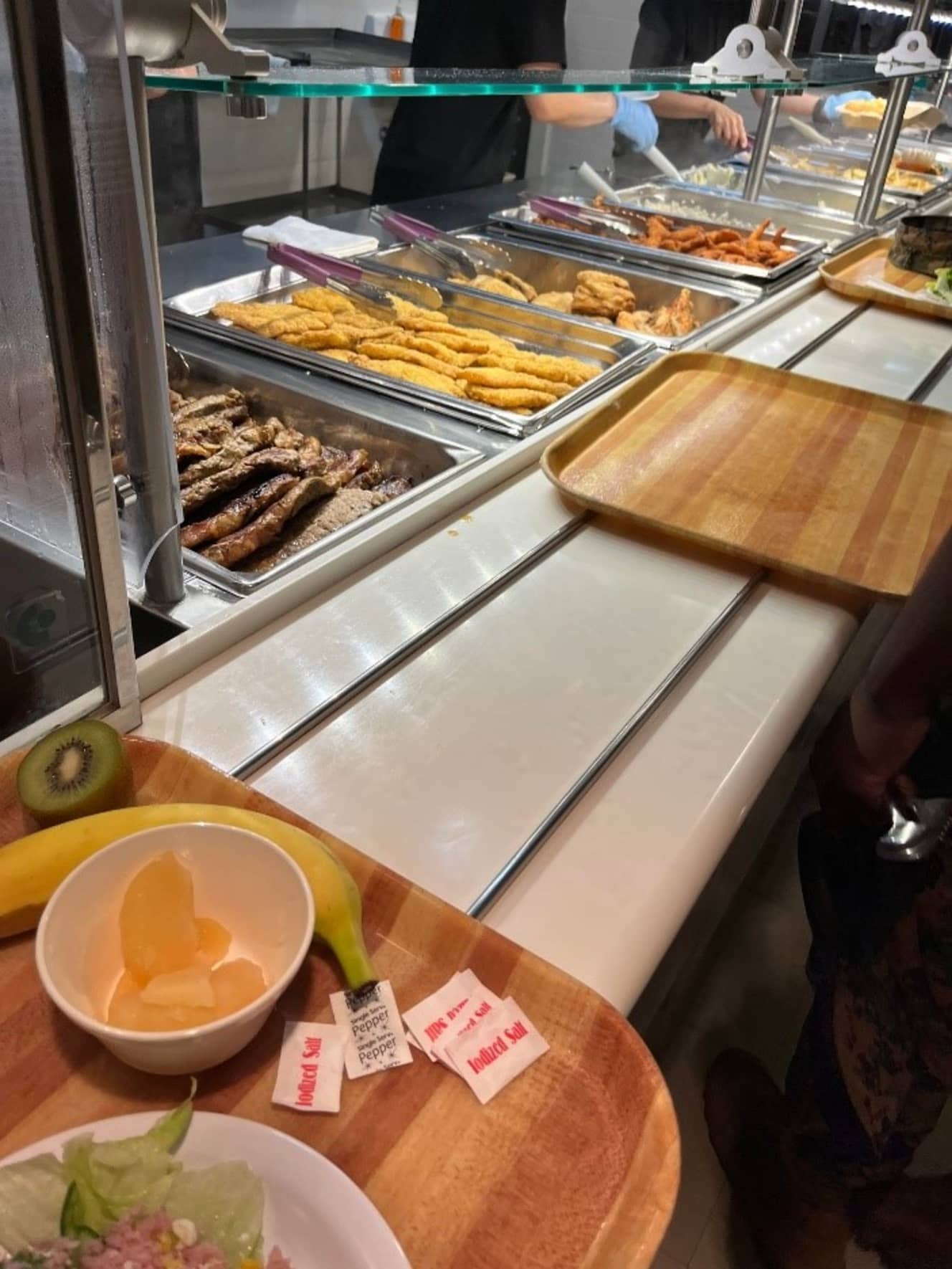
So what about the military “meals” of other countries? Some people say, “Well, you have to pay to eat in the U.S. military mess hall, right?” But that is not enough. The U.S. military adds a Basic Allowance for Subsistence (BAS) in addition to salary, and in FY2023, soldiers who have just joined the military (Enlisted) will receive $452.56 (approx. 67,000 yen).
With this money (BAS), they buy a “meal card” and present this card at the dining hall to eat. Even if they use the cafeteria every day, only about one-third of the BAS amount is deducted. The remaining money is enough to cover the cost of daily consumables such as toilet paper and toiletries.
The main course of meals in the U.S. military is limited, but there is an all-you-can-eat buffet of side dishes. A drink bar, soft-serve ice cream bar, fruit, and desserts are also available. At larger bases, there are even vegan and vegetarian cafeterias.
The Taiwanese military, which is preparing for a military invasion by China, has also adopted a buffet-style diet that includes not only calorie content but also a variety of nutritious ingredients.
In 1919, there was a review of the “Nutritional Intake Standards,” the basis for the diet of the Self-Defense Forces personnel. Until then, the SDF had a nutritional intake standard of 3,300 kilocalories per day, which was established 50 years ago. This was too high in calories and not enough in other nutrients (fiber, vitamins, minerals, etc.). The new standard was changed to 3,000 kilocalories per day, and foods such as meat, vegetables, fruits, beans, potatoes, and seaweed were added. However, it still pales in comparison to the diets of military personnel in other countries.
The difference between the Japanese Self-Defense Forces’ concept of a minimum nutritional intake and that of the regular military forces of other countries, which aim to “keep soldiers strong,” leads to differences in physique and physical ability. Daily meals should not be neglected. The Self-Defense Forces is a physically demanding occupation. If they are hungry and cannot take enough nutrition during normal times, they will not be able to prepare for national emergencies such as large-scale disasters and emergencies. As one of the measures to strengthen the defense force, the SDF personnel who are responsible for national defense should be provided with substantial meals to prepare them for daily training and contingencies.
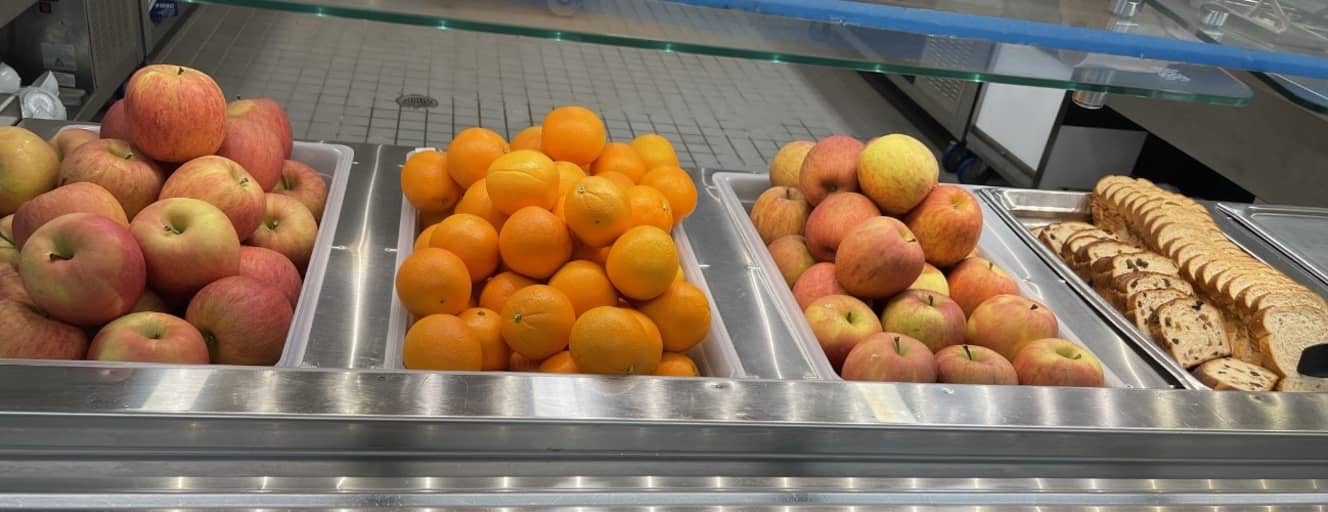
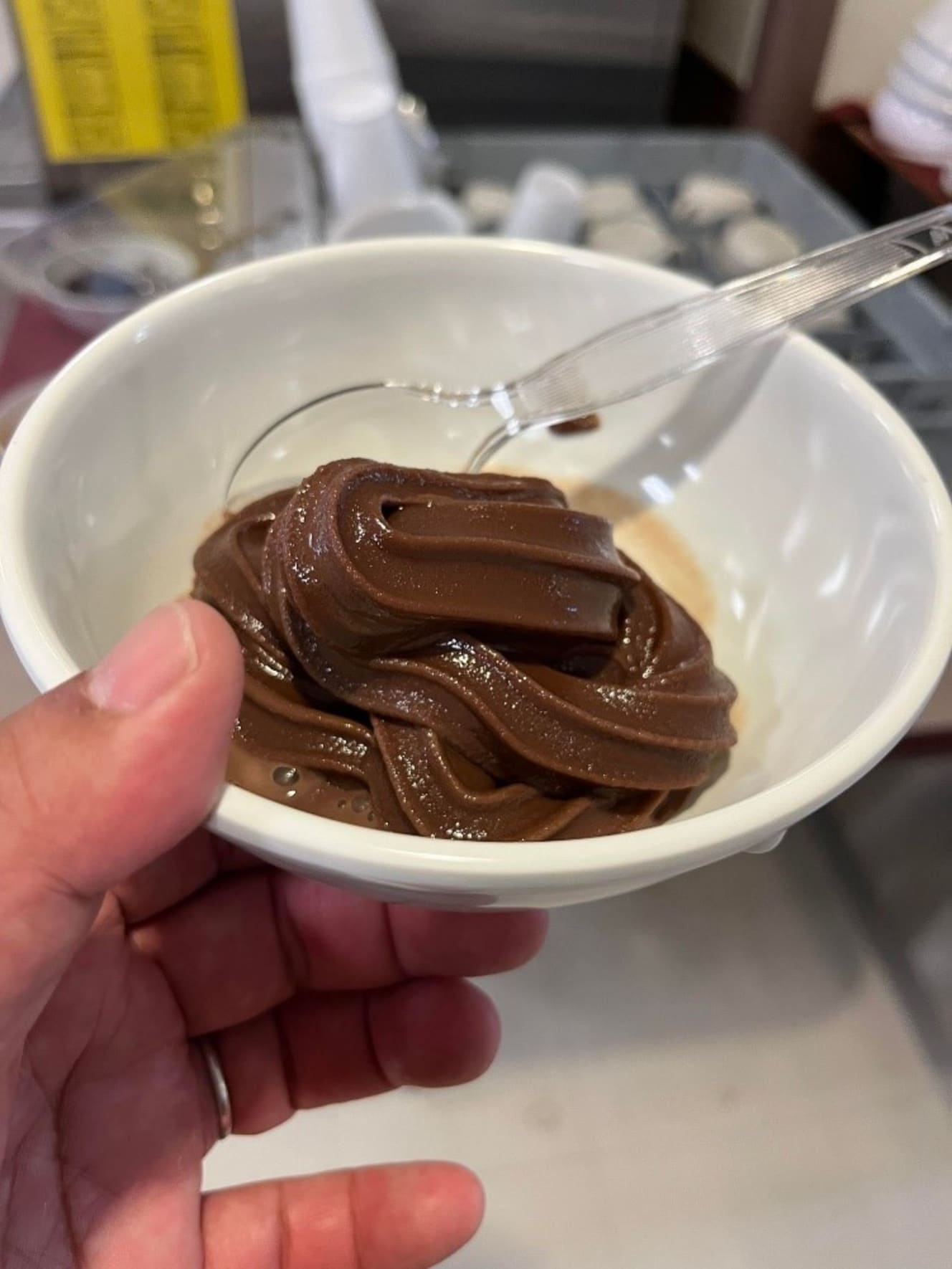
Interview, text, and photos: Rie Ogasawara
Rie Ogasawara is a national defense journalist. After graduating from Kansai Gaidai University, she worked as a freelance writer focusing on the Self-Defense Forces and security issues, and published a book titled "Self-Defense Forces Personnel Buy Toilet Paper at Bases with Their Own Money" (Fusosha Shinsho) in 2007. Winner of the 15th "True Modern Historical Perspective" Essay Competition sponsored by the APA Foundation for the Revitalization of Japan, and the Sanshuji Seishi Prize.